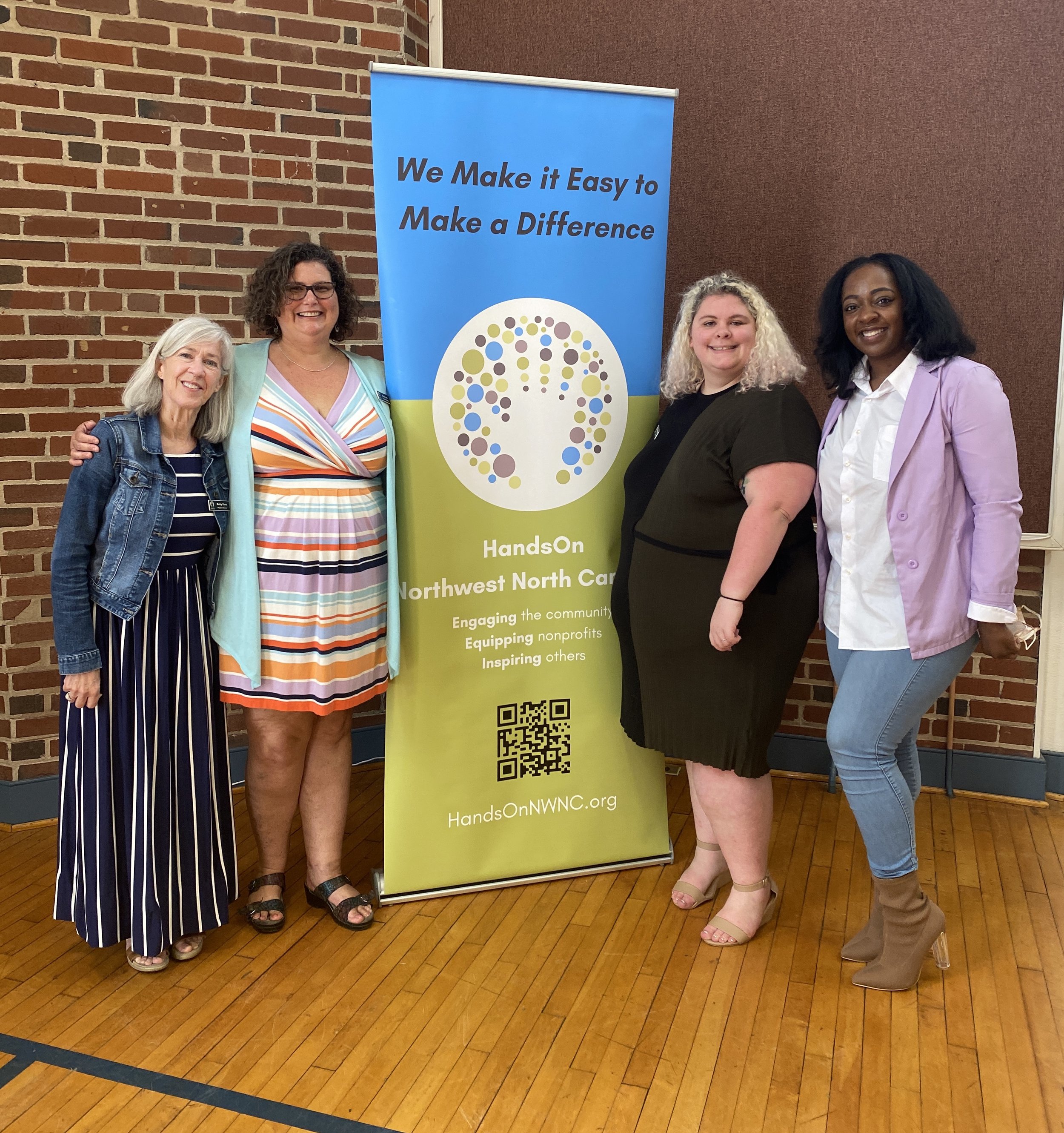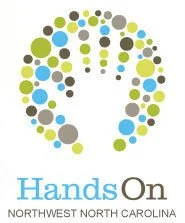Using SEE as a Building Block for a Culture of Belonging
Here at HandsOn NWNC, we’ve been on an equity journey since our early founding in the fall of 2007. Just a few years later, we launched our first specifically equity-focused program, Women’s Emerging Leaders, whose cohorts over the past decade have included women of color at relatively high percentages. But since 2019—before COVID, before the killing of George Floyd—we started being more explicit and intentional about not only where we are on our own organizational equity journey, but about what we could do to help others along on theirs as well. When I first learned about the SEE framework, it struck me as being the next logical step on that equity journey for HandsOn: how could this framework help us create a “culture of belonging” within our own organization?
The team at HandsOn Northwest North Carolina.
After all, creating an environment for effectiveness means creating a place where everyone can be their best selves, and bring their full, lived experience to their work. The core SEE aspects of meaningful action (which is baked into our mission), as well as model-building (e.g., can all of our team members see themselves in our work?) and being capable (e.g., do we value the skills and lived experiences of all? Do we help individuals to embrace this lived experience in their work?) seemed to flow directly towards this idea of “belonging.”
Since starting to work with SEE in mid-2021, we have been thinking about how we could apply these concepts to our own culture of belonging. As we geared up to onboard both new board and staff members in late 2021 and early 2022, this became a pressing question for us. Before SEE, we tended to focus way more on the technical skills and knowledge we thought people would need to be “effective” in their respective roles on our team, rather than focusing on the model building and recognition of pre-existing capability that people were bringing with them to HandsOn. In essence, we weren’t starting where they were at, or considering that everyone’s existing mental models might already provide a framework for us to build upon, as opposed to overwhelming them with information.
Over the past decade, we’ve been successful at building a board that is primarily composed of leaders of color, and have done so in a relatively organic fashion. Our board members have said time and time again that our ability to create a diverse, dynamic, and engaged board is because of how much our individual members enjoy being on this board, how much they appreciate their time with us—in a word, it’s because each member feels like they belong on our board. So, how do we translate this knowledge of what makes our board successful, both collectively and individually, to how we bring on new board members, and how could SEE help us with that? Rather than overwhelming our newbies with tons of details—ten years’ worth of financials? A strategic plan no one has looked at since COVID?—we chose to focus on making sure they felt they belonged at HandsOn. What would that look like for them? How could we communicate that to them?
We started, first, with our current board members, by redesigning our every-other-year board self-assessment. We asked three simple but more reflective questions designed to ensure that all of our board members felt capable in their role going forward. One of the responses to that assessment included an idea to prepare a simple overview of the top things that we think the board needs to keep in mind as we dive into 2022–-a tool that would be helpful to both new and current members. Such a tool would allow all board members to see themselves in our work—to help them figure out where they belonged in our organization, and how they could apply their own skills, talents, and lived experiences to those challenges and opportunities. This piece became a two-part Canva image, so it was visually-based and not overly word-y (unlike this blog post!). It served as the basis for our board’s annual “strategic thinking/planning” session in February, which is the first full board meeting of the year for our new members. This piece, and the substantive discussion which flowed from it, would never have been created without our work to marry SEE to our “culture of belonging” goal.
In addition, we also used SEE to scrap our traditional paper-and-too-many-facts board orientation and replaced it with a 45-minute conversation. We focused the discussion on the question of “What does the experience of serving on our board feel like?” We felt if we focused more on the model-building goal of board orientation—the belonging aspect–then the being capable and meaningful action pieces would follow. We did provide access to all of the same boring background material electronically, but rather than being focused on this, we delved into how we build relationships on the board, how new members can get their questions answered, current issues/context likely to inform that February board meeting, how our board meetings flow, etc. This led to all four new members attending a special January board meeting, allowing for full participation at the February board meeting.
We also used the same kind of key questions in redesigning the onboarding of a new staff member—“What does it mean to be a member of our team? How can you contribute to our success?”—and we worked intentionally to create in-person touch points so that we could foster appropriate model building activities for them. With our team still entirely remote—due to both COVID and pre-existing office space issues—being able to successfully onboard a new staff member virtually, clearly worked better when intentionally applying SEE principles than the process we had used earlier in the year to onboard a team member. Of course, supporting this new staff member is an ongoing process, but we feel that we’ve given them the essentials of what they need to feel capable, and bring their best self to their work—because they hopefully feel they belong on our team.
When organizations ask us about what they can do to build equitable environments within their own structure, we now feel as though we can confidently share our own experiences using SEE as a tool to help create what can often be an elusive culture of belonging for both board and staff members. We’ve learned that focusing on making sure people feel confident in what they can bring to the team, understand the model in which we operate, and have the opportunity to directly impact our mission and services (basically, the three key SEE concepts), helps people feel like they belong. And that has made all the difference!
Amy Lytle is the Executive Director of HandsOn Northwest North Carolina, a member of our Points of Light Affiliate grantee cohort. HandsOn NWNC works with more than 500 different nonprofits in a six county area, providing a wide variety of training, technical assistance, leadership and professional development opportunities that help nonprofits become more effective and efficient in their work.


